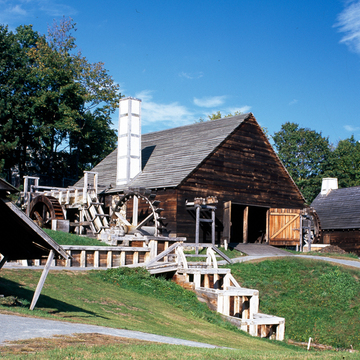The premier site in the history of American iron manufacture, this reconstruction commemorates the first serious attempt to forge iron in the region. The Undertakers of the Ironworks in New England acquired the land in 1647 and continued to operate the forge with mixed commercial success. Here most early ironmasters in New England learned their practical skills; the site thus became the hearth of the later American iron industry. The First Iron Works Association (funded by the nation's iron and steel industry) acquired the site in 1944, conducted extensive archaeology, and hired the architects of the Colonial Williamsburg restoration to reconstruct the buildings and the landscape. The clap-boarded gable-roofed buildings and stone furnace
You are here
Saugus Iron Works National Historic Site
1647–c. 1670 archaeological site; 1949–1954 reconstructed, Perry, Shaw and Hepburn; Kehoe and Dean. 244 Central St.
If SAH Archipedia has been useful to you, please consider supporting it.
SAH Archipedia tells the story of the United States through its buildings, landscapes, and cities. This freely available resource empowers the public with authoritative knowledge that deepens their understanding and appreciation of the built environment. But the Society of Architectural Historians, which created SAH Archipedia with University of Virginia Press, needs your support to maintain the high-caliber research, writing, photography, cartography, editing, design, and programming that make SAH Archipedia a trusted online resource available to all who value the history of place, heritage tourism, and learning.


